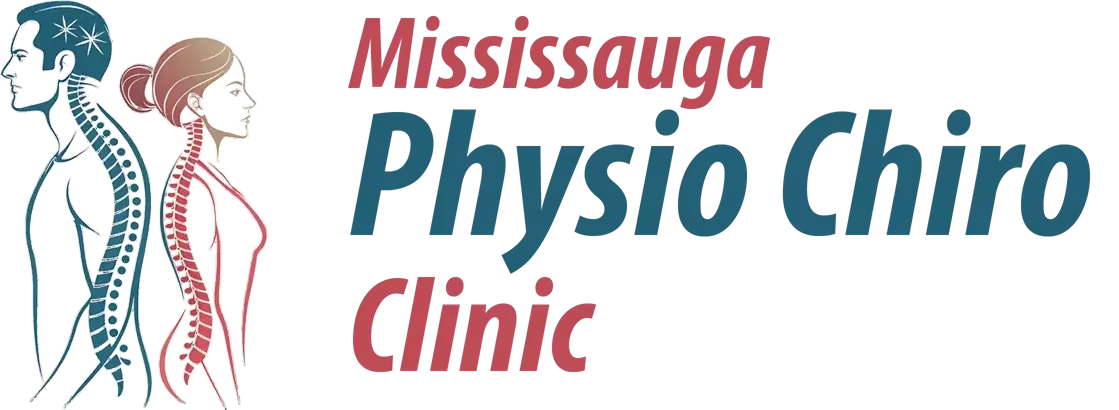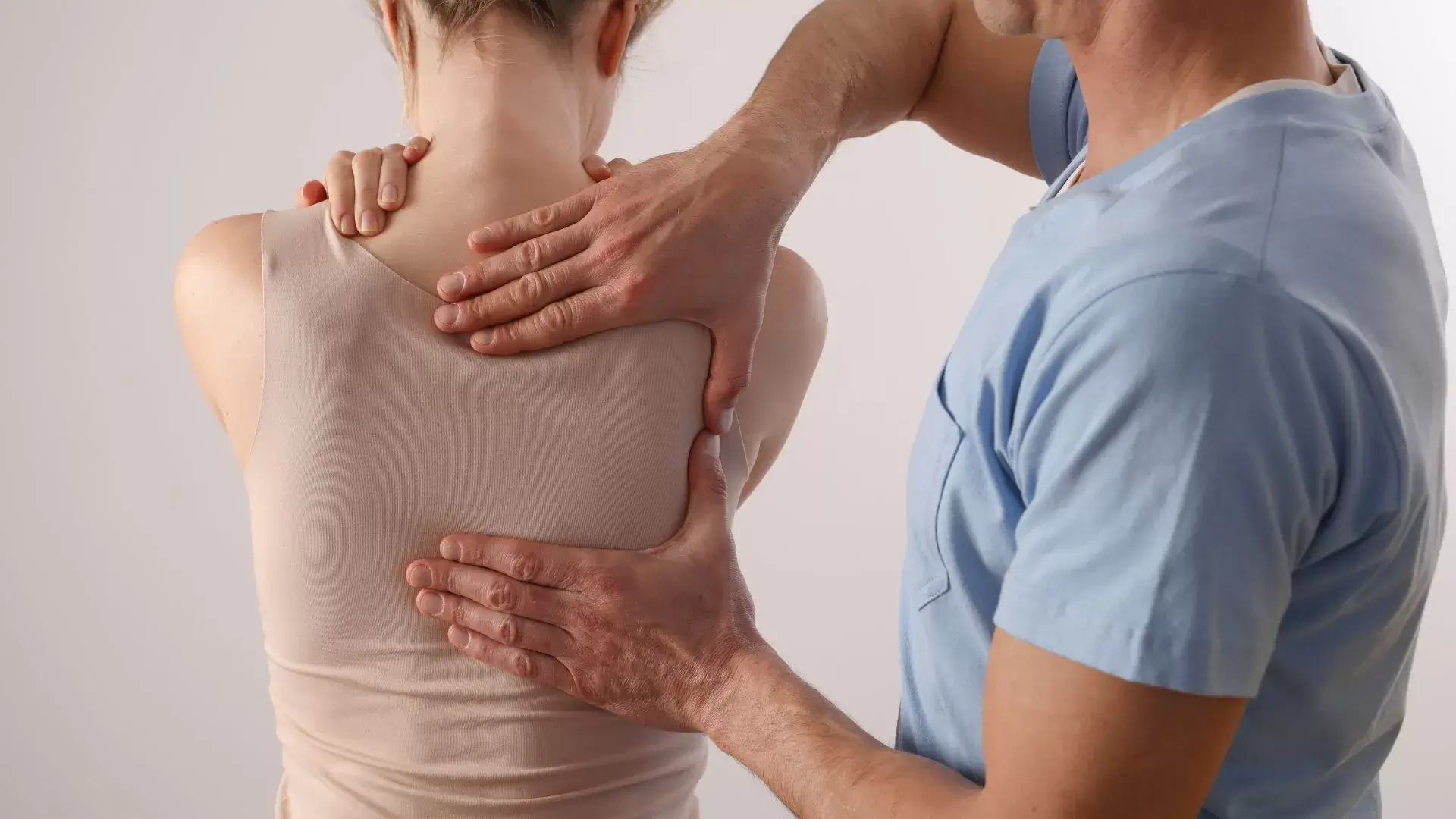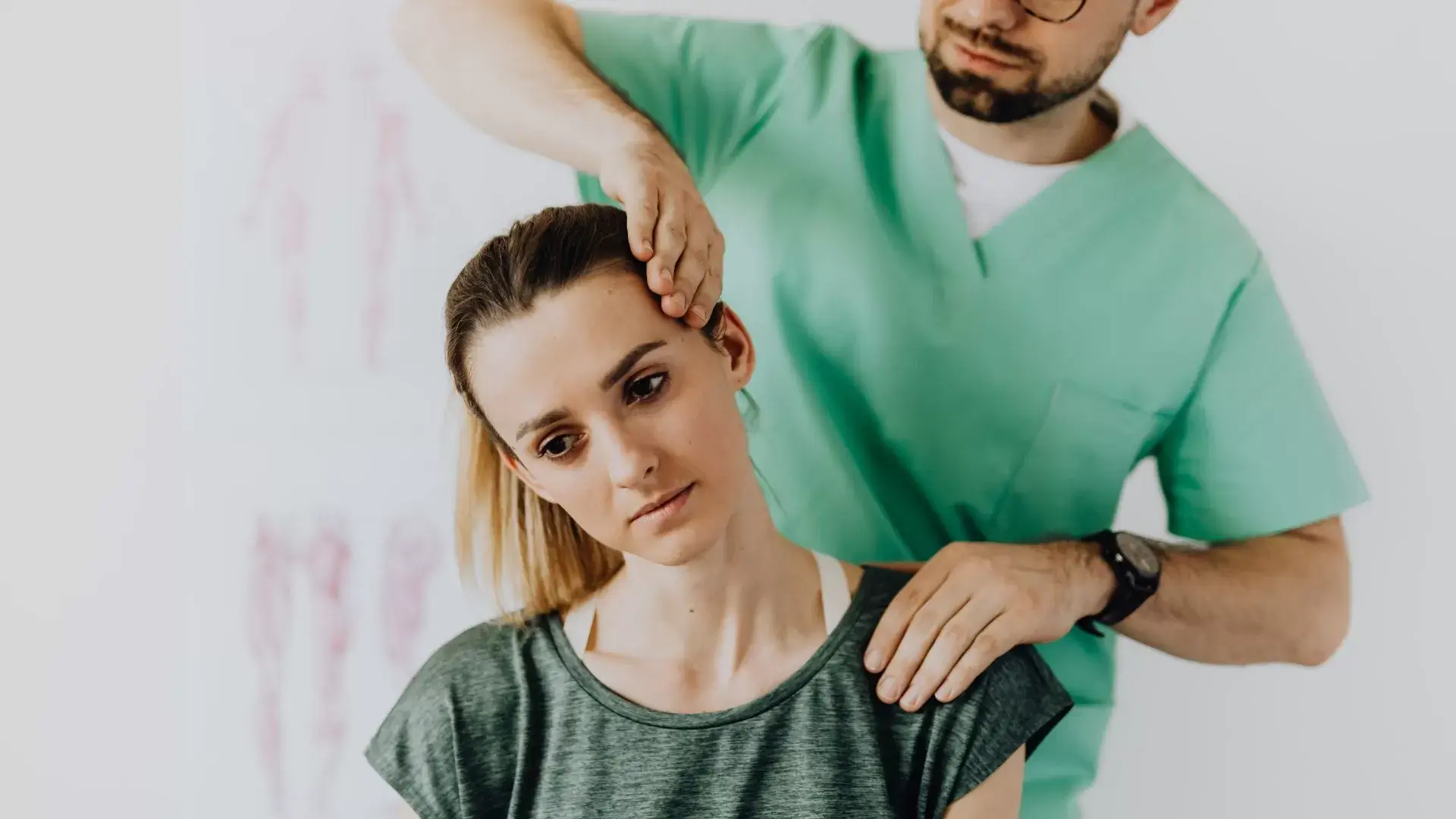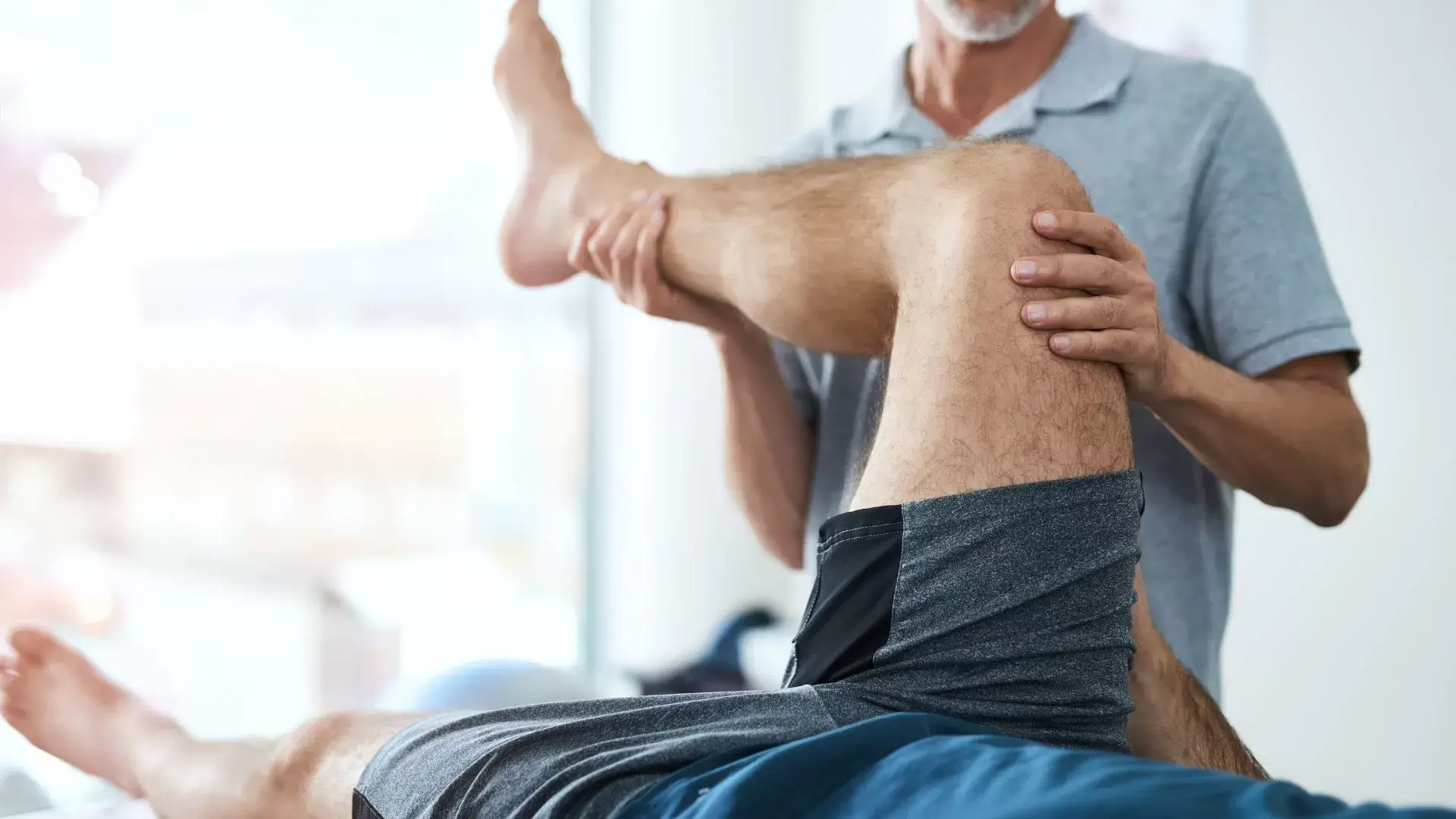Chiropractor for Scoliosis in Mississauga If you’re searching for a chiropractor for scoliosis in Mississauga, we recognize how important it is to find specialized care. Our experienced chiropractors in Mississauga focus on evaluating and treating various types of scoliosis, from idiopathic to congenital. We develop personalized treatment plans aimed at improving spinal alignment and function, which can help alleviate discomfort and enhance mobility. Our holistic approach combines adjustments, therapeutic exercises, and ongoing evaluations to guarantee best results. We’re here to support you every step of the way, and we invite you to learn more about our specific methods and the benefits they can bring. About Our Physiotherapy and Chiropractic Services At Mississauga Physio Chiro Clinic, we offer extensive physiotherapy and chiropractic services tailored to meet the unique needs of individuals dealing with scoliosis. Our approach focuses on enhancing spinal cord health and function, ensuring that each treatment plan is designed specifically for the individual’s condition. We understand that scoliosis can affect the spinal column, leading to discomfort and potential spinal cord pain. That’s why we emphasize spinal cord rehabilitation through targeted exercises and therapies. Our physiotherapy specialists work alongside chiropractors to provide a thorough treatment strategy, aiming for ideal spinal cord treatment outcomes. We utilize advanced techniques in spinal cord therapy to address pain and improve mobility, fostering a supportive environment for spinal cord injury recovery. By integrating physiotherapy and chiropractic services, we aim to restore balance and alignment, enhancing overall spinal health and function. Together, we’re committed to helping our patients navigate their scoliosis journey with compassion and professionalism. We believe that with the right support and tailored treatments, individuals can achieve a better quality of life while managing their condition effectively. Let’s work together to improve your spinal health and well-being. Scoliosis and Its Effects on Spinal Health Understanding scoliosis is essential, as its effects on spinal health can greatly impact mobility, posture, and overall well-being. Scoliosis, a condition characterized by an abnormal curvature of the spine, can lead to numerous spinal cord disorders that compromise spinal cord health. As the curvature progresses, it can place increased spinal cord pressure, potentially affecting spinal cord flexibility and causing spinal cord dysfunction. We often see symptoms that can mimic spinal cord injury symptoms, such as pain and discomfort, which can further hinder daily activities. This misalignment not only alters spinal cord anatomy but also disrupts spinal cord neurological function, resulting in challenges in movement and coordination. Types of Scoliosis Chiropractors Commonly Treat Various types of scoliosis can affect individuals differently, and chiropractors often treat these diverse forms to help manage symptoms and improve spinal health. We commonly encounter idiopathic scoliosis, which typically develops in adolescents, and congenital scoliosis, resulting from spinal cord curvature present at birth. Neuromuscular scoliosis, associated with conditions like muscular dystrophy or cerebral palsy, is another type we often address. In our practice, we focus on restoring spinal cord alignment and enhancing spinal cord function through tailored spinal cord therapy. Our approach includes spinal cord adjustments aimed at alleviating discomfort and improving mobility. By understanding the unique spinal cord symptoms of each patient, we can create effective rehabilitation plans that support overall well-being. We believe that addressing scoliosis isn’t just about physical alignment; it’s about enhancing quality of life. Our goal is to empower patients with the knowledge and tools they need for effective spinal cord rehabilitation. By fostering a supportive environment, we help individuals navigate their journey toward better spinal health and improved function. Together, we can work toward a future where scoliosis doesn’t define our patients’ lives. Recognizing the Signs and Symptoms of Scoliosis Recognizing the signs and symptoms of scoliosis is fundamental for early intervention and effective management, as subtle changes in posture or spinal alignment can greatly impact a person’s overall health and well-being. We should be aware that scoliosis often manifests as an uneven appearance in the shoulders or hips, or a noticeable curve in the spine. These changes can lead to discomfort and affect spinal cord health if left untreated. It’s important to pay attention to any signs of spinal cord compression, which may result in pain, numbness, or weakness in the limbs. Additionally, we must consider the long-term effects of spinal cord degeneration or damage, which can stem from untreated scoliosis. If we notice these symptoms, it’s essential to consult with spinal cord specialists to discuss potential spinal cord therapy options. How Chiropractors Assess and Diagnose Scoliosis After identifying the signs and symptoms of scoliosis, it’s important for us to understand how chiropractors assess and diagnose this condition to determine the best course of action for effective treatment. The process begins with a thorough spinal cord assessment, where chiropractors evaluate the spine’s alignment and curvature. They often conduct visual examinations, looking for any noticeable asymmetries in posture or shoulder height. To gain a deeper insight into spinal cord health, chiropractors may also utilize spinal cord imaging techniques, such as X-rays. These images help in accurately measuring spinal cord curvature and identifying any underlying issues that may affect spinal cord function. Once the assessment is complete, chiropractors perform a spinal cord diagnosis to establish the severity of scoliosis and its potential impact on overall health. This detailed spinal cord evaluation allows them to create an individualized treatment plan tailored to each patient’s specific needs. Understanding these assessment methods not only empowers us but also reinforces the importance of early intervention for effective spinal cord treatment and long-term health outcomes. Chiropractic Treatment Options for Mild to Moderate Scoliosis Chiropractic treatment options for mild to moderate scoliosis focus on improving spinal alignment and function, helping us manage symptoms and enhance overall well-being. Through targeted spinal cord therapy, we can address postural imbalances and promote spinal cord healing. Our chiropractors often employ techniques designed to improve spinal cord mobility, which can alleviate discomfort and enhance our quality of life. In addition, spinal cord realignment practices may be integrated into our treatment plans, aiming to restore proper spinal connections. This approach not only aids
Physiotherapy for Pregnancy Exercise
Physiotherapy for Pregnancy Exercise in Mississauga In Mississauga, we recognize how essential specialized physiotherapy for pregnancy exercise. Our services focus on safety and effectiveness, tailoring programs to support your unique physical changes. We incorporate exercises for flexibility, pelvic floor strength, and relief from common discomforts like back pain. Each trimester has safe workouts to enhance your energy and well-being. With our guidance, you’ll learn the importance of proper body mechanics and how to manage pain effectively. Together, we can promote your overall fitness during this special journey, and there’s so much more to explore about how we can support your pregnancy experience. About Our Physiotherapy and Chiropractic Services At Mississauga Physio Chiro Clinic, we offer specialized physiotherapy and chiropractic services designed to support women throughout their pregnancy journey. Our team understands the unique physical changes that occur during this time, and we’re committed to providing tailored solutions to enhance prenatal health and wellness. We focus on pregnancy exercise programs that prioritize safety and effectiveness. Our pregnancy workouts incorporate essential elements like pregnancy flexibility, pelvic floor exercises, and specific routines aimed at relieving pregnancy back pain. We believe that tailored pregnancy fitness tips are vital for maneuvering the challenges of physical discomfort and maintaining overall well-being. Our Top Mississauga Physiotherapy and Chiropractic Services, we empower women to embrace prenatal fitness. We guide you in safely engaging in pregnancy exercise that not only strengthens your body but also nurtures your mental health. Our goal is to help you experience the numerous benefits of exercising during pregnancy, including improved energy levels and reduced discomfort. Why Pregnancy Exercises Are Essential for You and Your Baby Engaging in pregnancy exercises not only helps us manage the physical changes of pregnancy, but also greatly benefits both our health and the developing baby. By incorporating prenatal exercise into our routine, we can enhance our overall pregnancy fitness. Safe pregnancy exercises, such as pregnancy core exercises and prenatal stretching routines, help alleviate common discomforts and promote flexibility. Additionally, pregnancy strength training modifications allow us to maintain strength without strain. These tailored routines guarantee we’re building endurance, which is crucial as our bodies adapt to carrying extra weight. We can also benefit from prenatal breathing techniques, which aid in relaxation and stress management, contributing to improved pregnancy mental health. Moreover, regular physical activity can provide significant pregnancy joint pain relief, addressing discomfort that many of us experience. Incorporating prenatal relaxation techniques further supports our emotional well-being, creating a calm environment for both us and our baby. Ultimately, establishing a balanced approach to pregnancy exercises is fundamental, as it fosters our physical health and mental resilience, promoting a smoother journey through pregnancy and preparing us for childbirth. How Physiotherapy Supports Your Prenatal Fitness Journey Utilizing physiotherapy during pregnancy can greatly enhance our fitness journey by providing tailored support for our unique physical challenges and needs. Through prenatal physical therapy exercises, we can learn effective techniques that address common discomforts, such as pelvic girdle pain and postural changes. Incorporating pregnancy stretches and low-impact exercises into our routine not only keeps us active but also helps manage any discomfort. We can benefit from specific pelvic girdle pain exercises designed to alleviate tension and improve mobility. Additionally, focusing on pregnancy-safe ab exercises and diastasis recti prevention exercises can help us maintain core strength while supporting our changing bodies. Participating in prenatal yoga and pregnancy mobility exercises encourages relaxation and enhances flexibility, which are essential for our overall well-being. Joining prenatal group classes fosters a sense of community and allows us to share experiences with other expectant mothers. With the guidance of a physiotherapist, we can improve our pregnancy posture, ensuring we feel confident and strong throughout our journey. By prioritizing these supportive practices, we’re setting ourselves up for a healthier, more enjoyable pregnancy experience. Safe and Effective Workouts for Every Trimester Maneuvering safe and effective workouts throughout each trimester is essential for maintaining our fitness and well-being during pregnancy. In the first trimester, we can focus on gentle exercises, like safe stretching in pregnancy and foundational postural exercises for pregnancy. These help us build awareness of our bodies and prepare for the changes ahead. As we progress into the second trimester, our energy levels often increase, allowing us to incorporate more dynamic activities. Joining pregnancy fitness classes and utilizing prenatal resistance bands can enhance our strength and flexibility, while also promoting pregnancy circulation improvement exercises. These workouts support our growing bodies and help manage pregnancy weight effectively. In the third trimester, we should prioritize low-impact activities that emphasize stability and relaxation. Gentle prenatal pilates can be beneficial, focusing on breath control and maintaining core strength. It’s vital to listen to our bodies and adapt our routines as needed, ensuring we stay comfortable and safe. Through each trimester, we must remember that our workouts should be tailored to our unique needs. By embracing a variety of exercises, we can enhance our overall well-being and enjoy a healthier pregnancy journey together. Core Strengthening Exercises Designed for Pregnancy During pregnancy, it’s essential for us to incorporate core strengthening exercises that not only support our changing bodies but also enhance stability and prepare our muscles for labor and recovery. Focusing on core stability helps us maintain balance, which is vital as our center of gravity shifts. We can start with a prenatal warm-up, followed by pregnancy-safe HIIT workouts that include low-impact options tailored for our needs. Pelvic tilts during pregnancy are effective for strengthening our abdominal muscles while relieving back discomfort. Additionally, incorporating modified yoga poses for pregnancy can enhance flexibility and promote relaxation. For those interested in pregnancy weight training, we can opt for lighter weights with higher repetitions to build strength without overexerting ourselves. Combining pregnancy breathing exercises with these movements helps us connect with our bodies and prepares us for labor. We should also engage in pregnancy balance exercises to improve stability and prevent falls. Embracing these pregnancy muscle strengthening techniques not only boosts our physical health but also contributes to overall prenatal
Chiropractor for Sprains and Strains
Chiropractor for Sprains and Strains in Mississauga At our Best Chiropractic Clinic in Mississauga, we recognize the importance of addressing sprains and strains effectively. Our experienced Chiropractor for Sprains and Strains specializes in treatments that focus on pain relief and enhancing natural healing through personalized care. We begin with a thorough assessment of your symptoms and provide tailored rehabilitation programs designed to restore mobility and strength. Utilizing innovative techniques like adjustments and soft tissue therapies, we help alleviate discomfort and prevent future injuries. We’re here to support your recovery journey with compassion and expertise. For more valuable insights into our approaches and services, we encourage you to explore further options available to you. About Our Physiotherapy and Chiropractic Services At Mississauga Physio Chiro Clinic, we regularly provide thorough physiotherapy and chiropractic services tailored to address sprains and strains effectively. We recognize that both acute and chronic injuries can greatly impact your quality of life, which is why our approach focuses on extensive injury management. Our physiotherapy and chiropractic services are designed to alleviate pain and promote healing for various conditions, including soft tissue injuries and muscle strains. We offer personalized sprain treatment plans that incorporate rehabilitation for sprains, ensuring that our patients recover fully and safely. For those dealing with sports injuries, we emphasize the importance of proper recovery techniques to prevent future occurrences. Our experienced team works collaboratively to streamline the recovery process, utilizing evidence-based practices that enhance your body’s natural healing abilities. Whether you’re facing a recent injury or struggling with chronic sprain recovery, we’re here to support you every step of the way. Our commitment to your health means we’ll guide you through the rehabilitation journey, providing the tools and resources needed for optimal recovery. Together, we can help you regain strength, mobility, and confidence in your physical activities. Sprains vs. Strains: Understanding the Key Differences Understanding the differences between sprains and strains is essential for effective treatment and recovery, as both injuries affect different parts of the body and involve distinct types of damage. A ligament sprain occurs when the ligaments connecting bones are overstretched or torn, often resulting in swelling, bruising, and pain—commonly referred to as sprain symptoms. In contrast, a tendon strain affects the tendons, which connect muscles to bones, leading to similar soft tissue damage but presenting strain symptoms like muscle spasms and weakness. When we look at acute sprains, they usually arise from sudden injuries, while chronic strains develop over time due to repetitive motions. Knowing these distinctions helps us implement the right first aid for sprains and strains, such as rest, ice, compression, and elevation. In our commitment to injury prevention, we emphasize the importance of proper warm-up techniques and strength training. By understanding sprains vs. strains, we can better support our recovery and health journey, ensuring we address each injury appropriately and effectively. Primary Causes of Sprains and Strains Recognizing the primary causes of sprains and strains helps us take proactive steps to prevent these common injuries and manage them effectively when they do occur. Sprains and strains often arise from various factors, including overuse injuries and joint instability. Ankle sprains, wrist sprains, and knee sprains frequently result from sudden twists or falls, while repetitive strain injuries stem from the same motions performed over time, leading to ligament injury or tendon injury. Additionally, work-related injuries can contribute greatly to these conditions, especially in jobs that require repetitive movements or heavy lifting. Muscle tears may occur when we push our bodies beyond their limits, especially during physical activities without proper warm-up or stretching. Being aware of these primary causes allows us to implement preventive measures, such as proper training techniques, strengthening exercises, and ergonomic adjustments in our workspaces. By focusing on these aspects, we can minimize the risk of injuries and guarantee we maintain our physical health. The right approach to understanding these causes empowers us to create a safer and more resilient lifestyle. Recognizing the Symptoms of Sprains and Strains Identifying the symptoms of sprains and strains is essential for prompt treatment and recovery, as these injuries often manifest through pain, swelling, and reduced mobility in the affected area. Common indicators of a back strain or shoulder strain include joint pain, tenderness, and inflammation. We might notice swelling or bruising around the affected joint, which can help us differentiate between a sprain and a strain. In the case of a hamstring strain, we may experience a sudden sharp pain, often accompanied by a limited range of motion. It’s vital that we pay attention to these signs, as they can lead to further complications if not addressed. Inflammation can become persistent if we ignore these symptoms, making recovery more challenging. When we recognize these symptoms early, we can seek appropriate treatment, which will facilitate a better strain diagnosis and a more effective recovery plan. By understanding our body’s signals, we empower ourselves to take the necessary steps toward healing. Remember, if we’re unsure about our symptoms, consulting a healthcare professional is always a wise choice. How Chiropractors Diagnose Sprains and Strains Chiropractors employ a detailed assessment process to accurately diagnose sprains and strains, guaranteeing we receive the most effective treatment tailored to our specific needs. During our initial consultation, we discuss our symptoms and medical history, allowing the chiropractor to identify the type of injury, such as a quadriceps strain or groin strain. This information is crucial for an accurate sprain diagnosis. Next, we undergo a physical examination, where the chiropractor evaluates our range of motion and checks for tenderness, swelling, or instability. This helps assess the severity and nature of the injury. We may also receive recommendations for cold therapy for sprains to reduce inflammation. Once the diagnosis is established, a customized treatment plan is created, often incorporating physical therapy for strains, soft tissue rehabilitation, and mobility exercises. The plan may include rest for strains, compression for injuries, and strategies to promote ligament healing. Through this extensive approach, chiropractors guarantee we comprehend our condition and the steps necessary for
Physiotherapy for Strains and Sprains
Physiotherapy for Strains and Sprains in Mississauga We recognize how essential effective physiotherapy is for recovering from strains and sprains, and in Mississauga, we offer specialized Physiotherapy for Strains and Sprains with personalized care tailored to each individual’s needs. Our approach includes the RICE method for initial recovery, followed by targeted exercises that enhance strength, flexibility, and overall function. We focus on restoring stability and mobility while providing education on injury prevention. Our experienced physiotherapists in Mississauga assess your condition thoroughly to create a detailed rehabilitation plan. By prioritizing your health, we guarantee a smooth path to recovery. Explore with us how we can support your journey to wellness further. About Our Physiotherapy and Chiropractic Services At Mississauga Physio Chiro Clinic, we specialize in providing extensive physiotherapy and chiropractic services tailored to address strains and sprains effectively. We recognize that soft tissue injuries can greatly impact your daily life and athletic performance, which is why our dedicated team is here to assist you with thorough injury management strategies. Our approach includes thorough strain diagnosis to identify the root cause of your discomfort. We develop personalized rehabilitation for sprains that incorporates essential first aid for sprains, ensuring you receive ideal care from the outset. Our skilled therapists guide you through targeted mobility exercises designed to restore function and flexibility, promoting a swift recovery. Additionally, we emphasize the importance of strengthening for sprains, helping you build resilience against future injuries. For athletes, we offer specialized programs that integrate athletic training with our physiotherapy and chiropractic services, ensuring you’re not only recovering but also enhancing your performance. Together, we’ll work towards your goals, providing ongoing support and tailored strategies to help you regain your strength and mobility. Your recovery journey is our priority, and we’re committed to guiding you every step of the way. Exploring Strains and Sprains: A Comprehensive Overview Understanding the nuances of strains and sprains is essential for effective recovery and prevention, as these common injuries can greatly affect both daily activities and athletic performance. Strains often involve the stretching or tearing of muscles or tendons, leading to muscle strain, joint pain, and inflammation. On the other hand, sprains affect ligaments, which connect bones at joints. A ligament sprain can result in swelling and significant discomfort. Both injuries can cause soft tissue damage, impacting mobility and function. Tendon strain, a specific type of muscle strain, can also lead to chronic pain if not managed properly. The symptoms of these injuries can overlap, but recognizing the differences helps us tailor our approach to treatment. In our quest for injury prevention, we should focus on proper warm-ups, strength training, and flexibility exercises. It’s vital to listen to our bodies, as early intervention can make a difference between a minor issue and a severe injury. By understanding the mechanisms behind strains and sprains, we empower ourselves to make informed decisions about our health and recovery strategies. Let’s work together to stay active and resilient. Key Factors Leading to Strains and Sprains What factors contribute to the occurrence of strains and sprains, and how can we mitigate their risk in our daily activities and sports? We often encounter various situations that can lead to injuries, whether it’s an ankle sprain during a game or a wrist sprain while lifting heavy objects. Acute sprains, like knee sprains, typically arise from sudden movements or falls, while chronic strains often develop from repetitive motions or overuse injuries. Joint instability plays a significant role in these injuries, as weakened ligaments can easily suffer from ligament injury or tendon injury. Additionally, inadequate warm-up or stretching before physical activity increases the likelihood of sustaining sports injuries. We can reduce these risks by incorporating proper training techniques, maintaining strength and flexibility, and being mindful of our body mechanics during daily tasks. Recognizing the Symptoms of Strains and Sprains Recognizing the symptoms of strains and sprains is essential for effective treatment and recovery, especially since these injuries can occur suddenly during sports or daily activities. We need to be aware of the common indicators so we can seek appropriate care. Strain symptoms often include pain, swelling, and limited mobility, whether it’s a back strain, shoulder strain, hamstring strain, or quadriceps strain. In the case of a muscle tear, we may experience sharp pain and immediate weakness in the affected area. On the other hand, sprain symptoms typically involve a ligament tear, characterized by swelling, bruising, and instability in the joint. If we notice tenderness and difficulty bearing weight, it’s vital to assess the severity of the injury. Additionally, tendon tears can lead to persistent pain and reduced function. Understanding these signs can guide us in monitoring our condition and determining when to pursue soft tissue rehabilitation. By recognizing the symptoms early, we can initiate appropriate interventions, allowing for a smoother recovery process and a return to our activities. How Strains and Sprains Are Diagnosed Diagnosing strains and sprains typically involves a thorough evaluation of our medical history, physical examination, and sometimes imaging tests to determine the extent of the injury. During our consultation, we’ll discuss any specific incidents that led to the injury, like a groin strain or a calf strain, and we’ll evaluate symptoms such as bruising and tenderness. Our physical examination will focus on the affected area, checking for swelling and evaluating the range of motion. If we suspect a more complex injury, like a rotator cuff strain or a severe sprain, imaging tests such as X-rays or MRIs may be recommended to rule out fractures or more serious damage. For less severe injuries, like a thumb sprain or a finger sprain, we can often diagnose based on our findings during the physical examination. A sprain diagnosis will guide us in developing an appropriate treatment plan. Understanding the nature of our injury is essential as it helps us determine the best physical therapy for strains. By accurately diagnosing our condition, we can effectively address our recovery needs and set realistic expectations for healing. Effective Physiotherapy Solutions for Muscle Strains
Physiotherapy for Sciatica
Physiotherapy for Sciatica Treatment in Mississauga In Mississauga, we offer specialized physiotherapy services designed to alleviate sciatic pain and improve overall well-being. Our approach includes thorough assessments to understand each individual’s unique condition, followed by personalized treatment plans. We utilize a combination of targeted exercises, stretches, and manual therapy aimed at strengthening spinal muscles and enhancing posture. Our Experienced Physiotherapy & Chiropractic Team in Mississauga prioritizes your comfort and recovery, ensuring that you receive the care you need. Through our holistic strategies, we empower you to manage symptoms effectively and prevent recurrences. There’s more to explore about our treatments and how we can help you regain your quality of life. About Our Physiotherapy and Chiropractic Services At Mississauga Physio Chiro Clinic, we’re dedicated to providing thorough physiotherapy and chiropractic services tailored to alleviate sciatic pain and enhance overall well-being. Located at 1834 Lakeshore Rd W unit 6C, Mississauga, ON L5J 1J7, we recognize how debilitating sciatica can be. Our team is committed to offering effective sciatica treatment options that focus on providing sciatica relief through personalized care. We specialize in physical therapy for sciatica, combining techniques such as sciatica exercises and stretches to strengthen the muscles around the spine and improve flexibility. Our chiropractic care for sciatica focuses on spinal alignment, helping to relieve nerve pain and restore proper function. By addressing the root causes, we aim to reduce symptoms and prevent future issues. Patients can expect a thorough assessment during their first visit. We’ll develop a tailored treatment plan that meets individual needs, ensuring a supportive environment throughout the healing process. If you’re experiencing sciatica symptoms, don’t hesitate to reach out to us at (647) 372-1209. Together, we can work towards alleviating your pain and enhancing your quality of life through our dedicated physiotherapy and chiropractic services. Exploring Sciatica: Causes and Key Symptoms Understanding sciatica involves recognizing its common causes and key symptoms that can greatly impact daily life. Sciatica is primarily characterized by pain that radiates along the path of the sciatic nerve, which runs from the lower back through the hips and buttocks down to each leg. This sciatic pain often arises from nerve compression, typically due to a herniated disc or spinal stenosis. We may experience various sciatica symptoms, including lower back pain, tingling sensations, and muscle weakness in the affected leg. These symptoms can interfere with our daily activities, making it difficult to sit, stand, or walk comfortably. Additionally, radiculopathy may occur, where nerve irritation leads to sharp, shooting pains or numbness along the nerve pathway. Identifying the underlying sciatica causes is essential for effective treatment. By understanding these aspects, we can take informed steps toward relief and recovery. Seeking physiotherapy can be an important part of our journey, as it helps address both the symptoms and root causes, improving our overall quality of life. Understanding the Sciatic Nerve and Its Role in Pain The sciatic nerve, the largest nerve in the body, plays an essential role in transmitting signals between the lower back and the legs, making its health important for our mobility and comfort. Understanding the sciatic nerve anatomy is significant as it consists of nerve roots that emerge from the lumbar and sacral spine. When we experience sciatic nerve compression or nerve root irritation, it can lead to considerable discomfort and pain. Conditions like piriformis syndrome and degenerative disc disease may contribute to sciatic nerve irritation, causing both acute sciatica and chronic sciatica. For instance, spinal stenosis can result in the narrowing of the spinal canal, putting pressure on the nerve roots, leading to lumbosacral radiculopathy. This creates sensations of pain, tingling, or numbness that can travel down the leg. Comprehensive Physiotherapy Evaluation for Sciatica A thorough physiotherapy evaluation for sciatica is essential for identifying the specific factors contributing to sciatic nerve pain and guiding effective treatment strategies. During our extensive physiotherapy evaluation, we assess your medical history, perform physical examinations, and discuss your symptoms, including any leg pain, to arrive at an accurate sciatica diagnosis. This process helps us understand if there’s lumbar radiculopathy, a pinched nerve, or other nerve entrapment syndromes at play. By pinpointing the underlying causes, we can tailor our approach to your unique situation. We’ll also provide you with sciatica pain relief tips and recommend specific sciatic nerve exercises to alleviate discomfort and promote healing. Posture correction is another critical aspect we’ll address, as it can greatly impact your recovery. Ultimately, our goal is to create a personalized plan that not only aims for immediate relief but also supports your long-term sciatica recovery. By taking a holistic view of your condition, we’re committed to helping you regain mobility and improve your quality of life. Together, we can navigate this journey toward pain-free living. Tailored Treatment Approaches for Effective Sciatica Relief Effective sciatica relief requires us to implement tailored treatment approaches that address the unique needs and underlying causes of each individual’s condition. For many, sciatica arises from issues like a herniated disc in the lumbar spine, leading to sciatic nerve inflammation. To effectively manage this pain, we often combine various strategies, focusing on individualized pain management. One essential component is spinal decompression therapy, which can alleviate pressure on the sciatic nerve. Additionally, incorporating yoga for sciatica into our routine can enhance flexibility and strength, while targeted stretching for sciatica helps relieve tension in the affected areas. We also find that heat therapy for sciatica can provide immediate relief, soothing discomfort and promoting blood flow. Moreover, we encourage our patients to engage in sciatica-friendly activities that avoid exacerbating their condition. Exploring alternative sciatica treatments, such as acupuncture or massage, may also complement traditional therapies. By tailoring our approach and addressing each individual’s specific needs, we endeavor to create an all-encompassing treatment plan that fosters recovery and enhances overall well-being. Together, we can navigate the path to effective sciatica relief. Exercises to Alleviate Sciatica Pain and Promote Recovery Incorporating specific exercises into our treatment plan can greatly alleviate sciatica pain and support recovery efforts. These exercises help target






